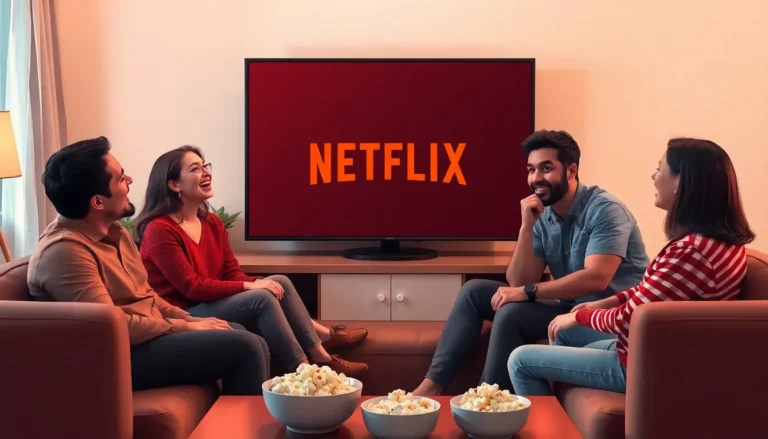Table of Contents
ToggleEver tried to send a video from your iPhone only to be met with the dreaded “file too large” message? It’s like getting ready for a night out and realizing your favorite shirt is in the laundry—frustrating and totally unfair. In a world where sharing moments is as easy as a tap, why does sending videos feel like a high-stakes game of digital limbo?
From pesky file size limits to those mysterious email settings, the struggle is real. But don’t worry, there’s hope! Understanding why those videos won’t fly into your inbox can save you time and sanity. Let’s dive into the quirks of iPhone video sharing and unlock the secrets to making your memories travel far and wide.
Common Issues With Emailing Videos
Emailing videos from an iPhone can lead to several common issues. Understanding these challenges helps users navigate video sharing effectively.
File Size Limitations
Most email providers impose strict file size limitations on attachments. Typically, this limit ranges from 20 MB to 25 MB. If a video surpasses this size, the email application displays an error message indicating the file is too large. Large videos, recorded in high resolution, often exceed these limits, causing frustration. Users frequently encounter this problem with longer videos or those containing high-quality footage. One solution involves compressing the video file before sending it, which can reduce the size significantly.
Unsupported Video Formats
Certain video formats may not be compatible with email systems. Common formats like .mov and .mp4 are usually acceptable, but less common formats can trigger errors. Unsupported files fail to upload or result in app notifications preventing users from sending them. Ensuring the video is in a compatible format before attempting to email it is crucial. Users may need to convert videos to widely accepted formats using apps or online tools. Regular software updates for devices also help maintain compatibility with various file types.
Solutions to Emailing Videos from Your iPhone
When emailing videos from an iPhone, users encounter various challenges. The following solutions address common issues.
Reducing Video File Size
Reducing video file size often resolves email limitations. Users can utilize apps like Video Compress or iMovie to lessen file dimensions. Compression typically maintains video quality while decreasing size significantly. Aim for a final size under 25 MB to ensure successful delivery through most email providers. Sending shorter clips also helps by naturally compressing files. Skipping high-resolution settings during recording aids in achieving smaller sizes.
Converting Video Formats
Converting video formats ensures compatibility with email systems. Most email providers accept formats such as .mov and .mp4. Users encountering issues should consider using conversion tools like HandBrake or online converters. Changing to widely accepted formats may resolve sending errors. Keeping devices updated plays a role in compatibility, as newer formats may become accepted with software updates. Always check settings before sending to ensure the proper format is selected.
Alternative Methods for Sharing Videos
Emailing videos directly from an iPhone often hits snags due to size restrictions and format issues. Fortunately, alternative methods exist that simplify the sharing process.
Using Cloud Storage Services
Cloud storage services like Google Drive and Dropbox offer ample space for storing large videos. Users can upload their video files to these platforms, generating a shareable link. Sharing becomes seamless when the recipient accesses the link to download or view the video directly. Many cloud services provide free storage options, which can accommodate several gigabytes of data, making them ideal for large files. Additionally, these platforms allow for easy organization and management of shared content, enhancing user experience.
Utilizing Messaging Apps
Messaging apps like WhatsApp and iMessage allow video sharing without size limitations that often come with email. Users can send videos directly through these apps, typically with a maximum file size ranging from 16 MB to 100 MB, depending on the application. These platforms compress videos to facilitate faster sending while maintaining reasonable quality. Group chats also enable multiple users to receive the video simultaneously, streamlining the sharing process. Accessibility and instant delivery make messaging apps a popular choice among iPhone users for video sharing.
Navigating the challenges of emailing videos from an iPhone can be frustrating but understanding the limitations and solutions makes it manageable. By utilizing video compression apps and ensuring compatibility with supported formats, users can effectively share their cherished memories without the hassle of file size errors. Exploring alternative sharing methods like cloud storage services and messaging apps also opens up new avenues for seamless video sharing. With these strategies in hand, users can enjoy connecting with others through their videos without the technical roadblocks.







